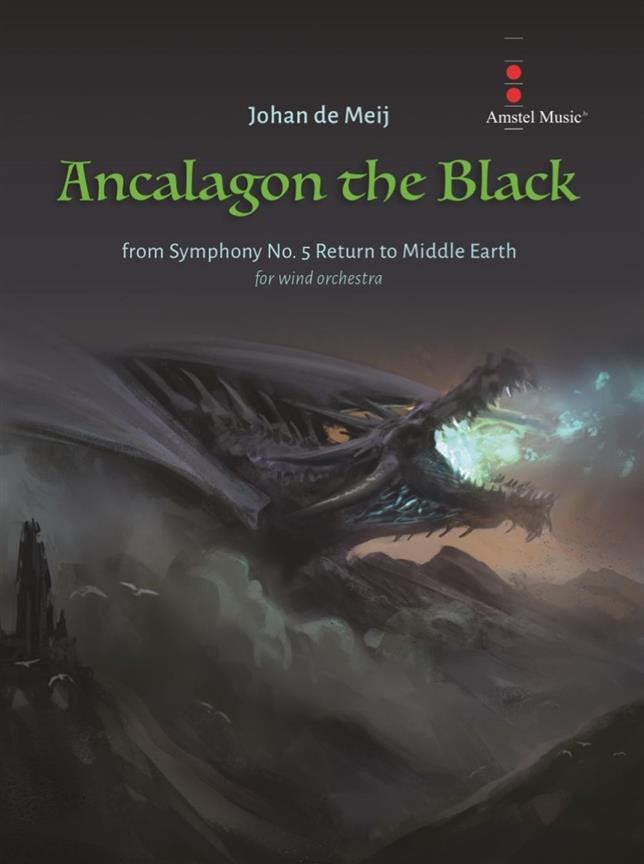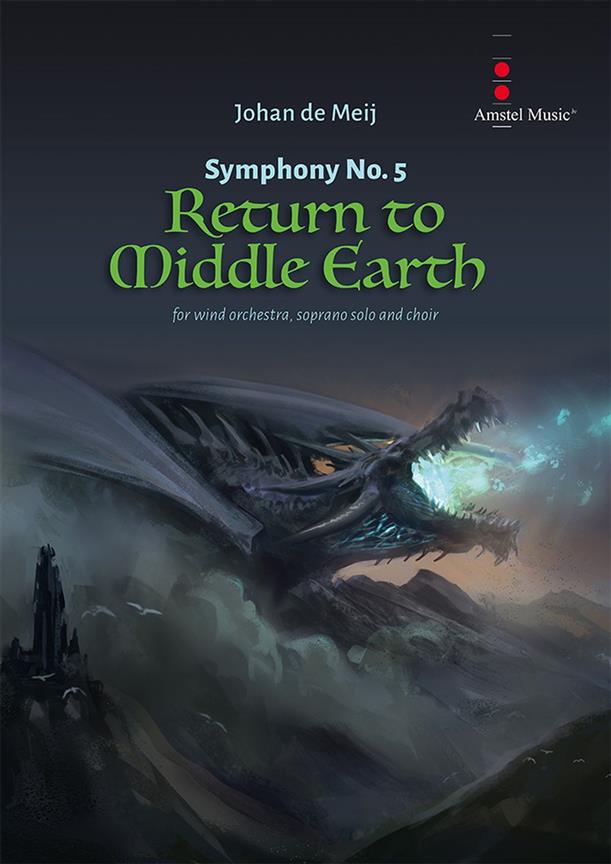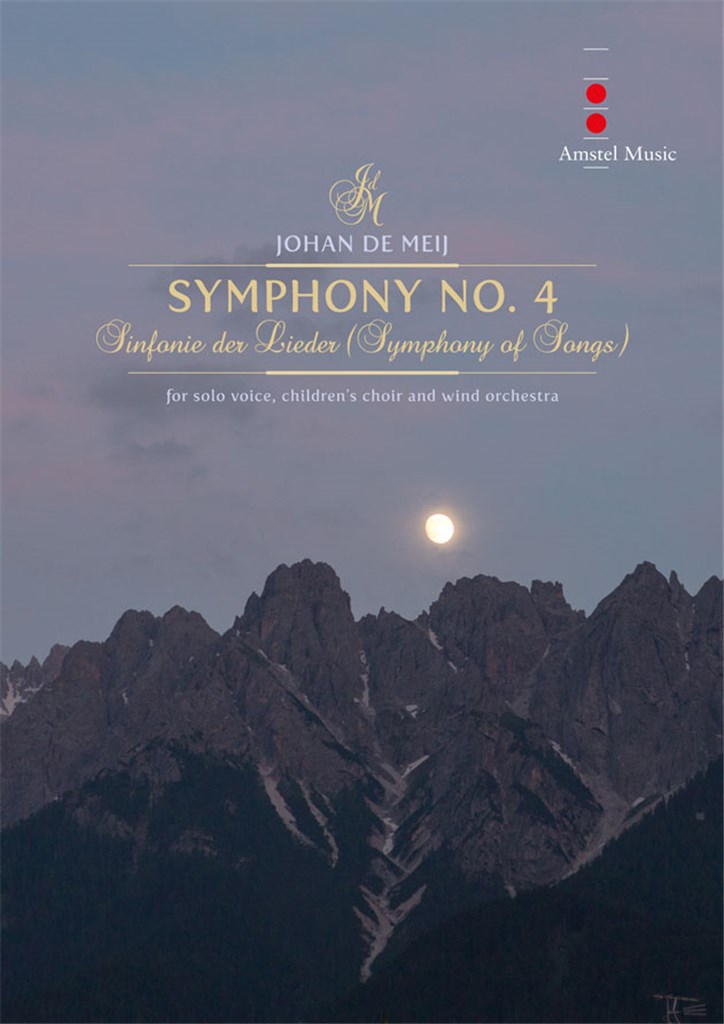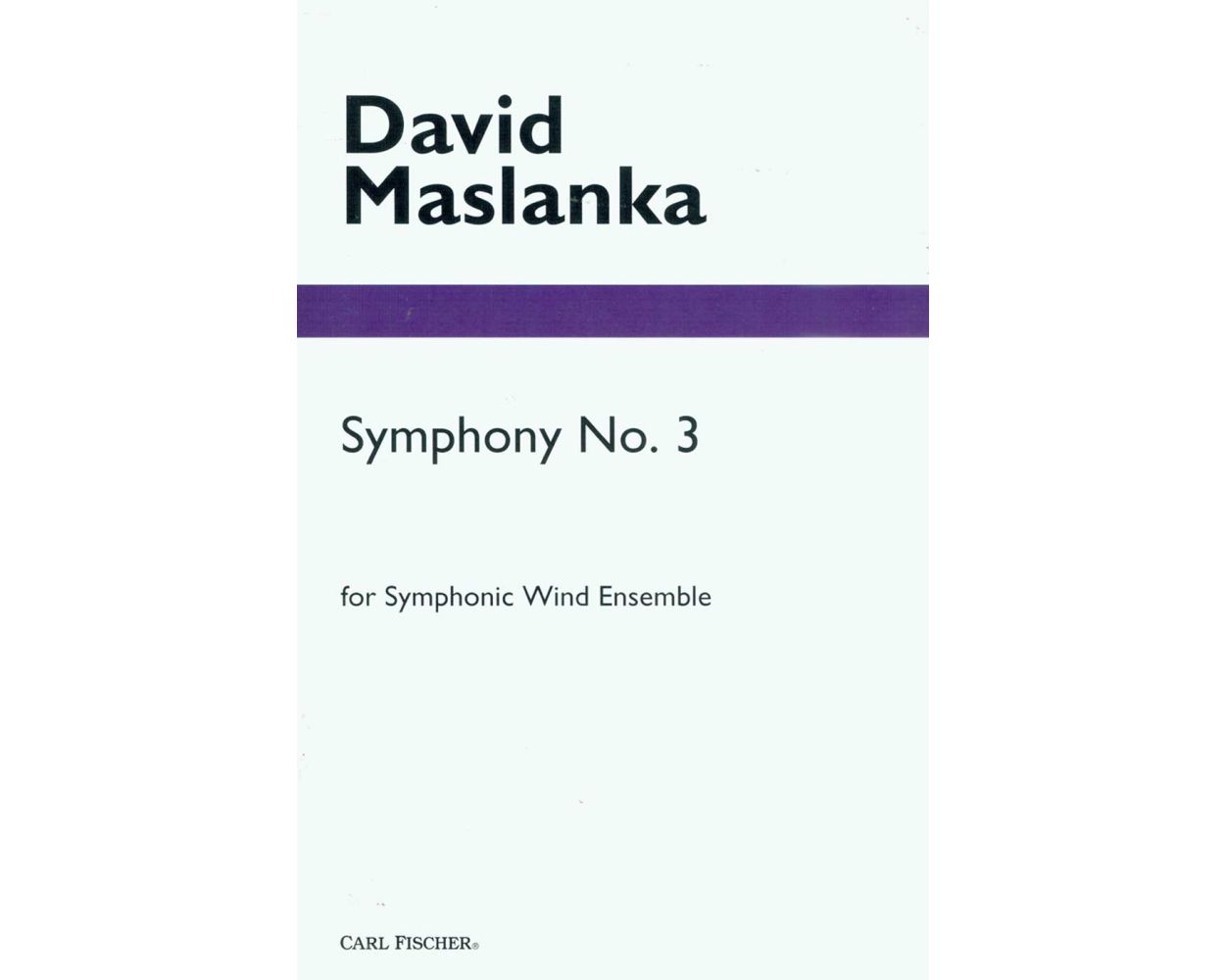Results
-
 £148.00
£148.00Ancalagon the Black (from Symphony No.5, Return to Middle Earth) (Concert Band - Score and Parts) - De Meij, Johan
After 30 years, Johan de Meij revisits Middle-Earth, the enchanting mythological world of J.R.R. Tolkien, with his spectacular Symphony No.5 Return to Middle Earth. Although there are thematic reminiscences of his monumental first Symphony The Lord of the Rings from 1988, De Meij is putting a completely different musical vibe into this symphony. This instrumental movement vividly describes the black dragon Ancalagon, the largest creature in Tolkiens mythological world.Duration: 6.00
Estimated dispatch 7-14 working days
-
 £615.50
£615.50Symphony No.5, Return to Middle Earth (Concert Band - Score and Parts) - De Meij, Johan
For Wind Orchestra, Soprano Solo and ChoirAfter 30 years, Johan de Meij revisits Middle-Earth, the enchanting mythological world of J.R.R. Tolkien, with his spectacular Symphony No. 5 Return to Middle Earth. Although there are thematic reminiscences of his monumental first Symphony The Lord of the Rings from 1988, De Meij is putting a completely different musical vibe into his new symphony. There is an important role for a solo soprano and mixed choir: they sing in Ilkorin, one of the Elvish languages of Middle-Earth. The Orcs and other thugs also take the stage, but they only use raw screams in their own language, also known as black speech.
Estimated dispatch 7-14 working days
-
 £1.95
£1.95Symphony No.4: Symphony of Songs (SATB Choral Octavo) - De Meij, Johan
Johan de Meij's 4th Symphony for solo voice, children's choir and wind orchestra is inspired by a variety of 19th century German poems.The first three movements use lyrics from the same source as Gustav Mahler did earlier: Kindertotenlieder by Friedrich Ruckert.:Ein Jahr ist nun geschwundenWenn zur Thur hereinWiedersehnThe second half of the symphony continues on the death theme, using a poem by Heinrich Heine (Two Brothers). The last two songs, Early Spring and Song of the Harlequin by Hugo von Hofmannsthal are a metaphor for rebirth, new life and hopeZwei Bruder (Heinrich Heine)Vorfruhling (Hugo von Hofmannsthal)Liedchen des Harlekin (Hugo von Hofmannsthal)Duration: 30:00
Estimated dispatch 7-14 working days
-
 £482.99
£482.99Symphony No.1 - The Archangels (Concert Band - Score and Parts) - Cesarini, Franco
The Swiss composer Franco Cesarini has waited a long time to write his first symphony and after years of considering and drafting, this Archangels Symphony, Symphony nr. 1 is a vast composition consisting of highly dramatic language, intense thematic developments and frequent polyphonic elaborations. The thematic material is taken from old Gregorian melodies that form the basis for the entire work, which is, despite the title, a non-programmatic work. It consists out of 4 movements: Gabriel, the gentle archangel; the supreme healer Raphael; the energetic archangel Michael, the Prince of the heavenly host; and surprisingly the archangel Urile, the 'forgotten' archangel. A true masterpiece and a fantastic musical challenge!Duration: 31:20
Estimated dispatch 7-14 working days
-
 £340.00
£340.00Symphony No.4: Symphony of Songs (Solo Voice, Children's Choir and Concert Band - Score and Parts) - De Meij, Johan
Johan de Meij's 4th Symphony for solo voice, children's choir and wind orchestra is inspired by a variety of 19th century German poems.The first three movements use lyrics from the same source as Gustav Mahler did earlier: Kindertotenlieder by Friedrich Ruckert.:Ein Jahr ist nun geschwundenWenn zur Thur hereinWiedersehnThe second half of the symphony continues on the death theme, using a poem by Heinrich Heine (Two Brothers). The last two songs, Early Spring and Song of the Harlequin by Hugo von Hofmannsthal are a metaphor for rebirth, new life and hopeZwei Bruder (Heinrich Heine)Vorfruhling (Hugo von Hofmannsthal)Liedchen des Harlekin (Hugo von Hofmannsthal)Duration: 30:00
Estimated dispatch 7-14 working days
-
 £115.60
£115.60Terrible Symphony - Haakon Esplo
Let us present "Terrible Symphony" - the perfect piece for beginner or junior bands!This fun composition gives young musicians the opportunity to have a great time while driving the conductor crazy. The piece includes well-known themes from great symphonies, along with new music, and not least, lots of silliness and fun. All musicians can join in and come up with more pranks and humorous elements. The audience will laugh out loud and enjoy this crazy and entertaining, yet terrible symphony.Make your concert an unforgettable experience with "Terrible Symphony"!In the score, you will find instructions and suggestions for the conductor as the musicians become increasingly impossible.
Estimated dispatch 7-14 working days
-
 £482.99
£482.99Symphony No. 1 - The Archangels - Franco Cesarini
The Swiss composer Franco Cesarini has waited a long time to write his first symphony and after years of considering and drafting, this Archangels Symphony, Symphony no. 1 is a vast composition consisting of highly dramatic language, intense thematic developments and frequent polyphonic elaborations.The thematic material is taken from old Gregorian melodies that form the basis for the entire work, which is, despite the title, a non-programmatic work. It consists out of 4 movements: Gabriel, the gentle archangel; the supreme healer Raphael; the energetic archangel Michael, the Prince of the heavenly host; and surprisingly the archangel Urile, the'forgotten' archangel.A true masterpiece and a fantastic musical challenge!
Estimated dispatch 7-14 working days
-
 £520.99
£520.99A Colour Symphony - Philip Sparke
Philip Sparke's third symphony, A Colour Symphony, was commissioned by "sinfonischen blasorchester wehdel" conducted by Thomas Ratzek. In the five movements (white, yellow, blue, red and green) the composer creates links betweenthe instrumentation and harmonic elements and the actual colour of the spectrum the movement stands for. In order to create the greatest richness possible, Philip Sparke used a very large instrumentation including low woodwinds, harp, piano andcelli. A Colour Symphony is an impressive and iconic addition to the standard repertoire for large symphonic bands.
Estimated dispatch 7-14 working days
-
 £274.99
£274.99Symphony No. 2: States Of Mind, Opus 87 - Teo Aparicio-Barberán
I- Logos (reason)II- Pathos (emotion)III- Ethos (credibility)The ancient Greeks believed that music shaped the character of man. In Egyptian temples, music was an essential part of the magical rites to alter the course of nature or to treat illness.And today we know that sound can actually alter matter. The secret of music lies in harmony and mathematics, as many great musicians and experts have always known.One of the most important qualities of music is that it enables the listener to focushis attention inwards instead of on what is around him. It is indisputable that music can inspire emotion. Music leads us into a universe of emotions that are difficult to put into words. In short, music reaches into corners of our soul and thoughtsthat words cannot reach and makes it possible to more clearly describe these different States of mind.The composer of this symphony also believes that each "musical argument" must be constructed so that it will induce the desired reaction in thelistener.Music: more than wordsIn recent times, most orchestral symphonies have been based on a story, a text or something similar so that their composition must be structured accordingly.The intention of this work by Teo Aparicio-Barbern is quitedifferent. The composer describes the three elements of the argument as the only formal structure of the work. Since certain philosophers in world history were able to subdivide grammatical argument, why shouldnt that also be possible for the musicalargument?Since ancient times the power of the spoken word has captivated mankind. How can an argument move people and mobilise the masses? Where does the power of words come from today? The answer lays not so much in what people say but in how theysay it.Rhetoric is one of the oldest humanist disciplines in Western civilisation. Aristotle, in the 4th century BC, called it the art of persuasion. Indeed, the terms rhetoric and persuasion are mutually interchangeable.More than 2000 years agoAristotle structured his rhetoric according to the following three elements: the logos, the pathos and the ethos.Logos (words, reason) is the reasoning that gives freedom to the structure of the text by expressing what one wishes to say usingspecialist terms. With logos we create arguments to receive public approval and to defend our ideas.Pathos, the second element, refers to the effective use of public psychology. Pathos can be considered as the capacity to induce the desired emotionalresponse in the public, by creating an emotional connection with the public so that they accept our message.The third element, ethos (credibility), refers to the character of the speaker and is perhaps the most important of the three elements.Aristotle based his concept of ethos upon his belief that truth and justice will always have the upper hand over anger. He believed that what was true and good was easier to prove and was more persuasive.This second orchestral symphony from thecomposer from Enguera follows these three parameters of the argument according to Aristotle. Each movement tries to summon a different state of mind in the listener so that the message itself can be better understood and appreciated. Apart from thesethree general concepts the music is only structured, as Claude Debussy would say, in a "formative way".The first movement, logos, is based on a scherzo melody that undergoes various changes in rhythm and harmony. The arguments are presented by meansof conventional techniques of composition. The second movement, pathos, is characterised by suggestions of sound. It is subdivided into two large parts. The first part is based on a five seven sequence with five sounds that are repeated in differentenvironments, structures and dynamics. The second part, which is largely tonal, brings out more directly the emotional overtones that each argument must have. The third movement, ethos, is a faithful rendition of the composers personality. In thislast part, clear rhythmic sequences stand out, there are large dynamic contrasts and lots of tone variation. In addition, and this is quite in keeping with the composers earlier work, the harmony in States of Mind is handled in a manner that is bothoriginal and efficient, as a result of which Aparicio-Barberns message is well understood by the listener.This second symphony by Teo Aparicio-Barbern is devoted to "my dear Henrie Adams, a guiding light in this eternally dark musical world. Thankyou for everything."
Estimated dispatch 7-14 working days
-
 £91.00
£91.00Symphony No. 3
The largest of David Maslanka's wind symphonies in scale and duration, Symphony No. 3 was commissioned by the University of Connecticut Symphonic Wind Ensemble, Gary Green, conductor, and premiered by them in 1991. It is in five movements and lasts nearly 50 minutes. The moderate tempo and forceful character of the first movement contrast with the serene "nature" music of the second movement. The third movement, a fast and bristling scherzo largely in A Minor, is followed by two slower movements, both labeled "lament." The composer characterizes the music of these movements as both sorrowful and joyful. The fifth movement, in particular, has the lamenting character overcome by an ecstatic vision of natural beauty and the life force. Symphony No. 3 is arguably Maslanka's most profound and satisfying large-scale work, and it ends in an unequivocal A Major that has the feeling of a benediction. Large score and parts are available on rental.
Estimated dispatch 12-14 working days
